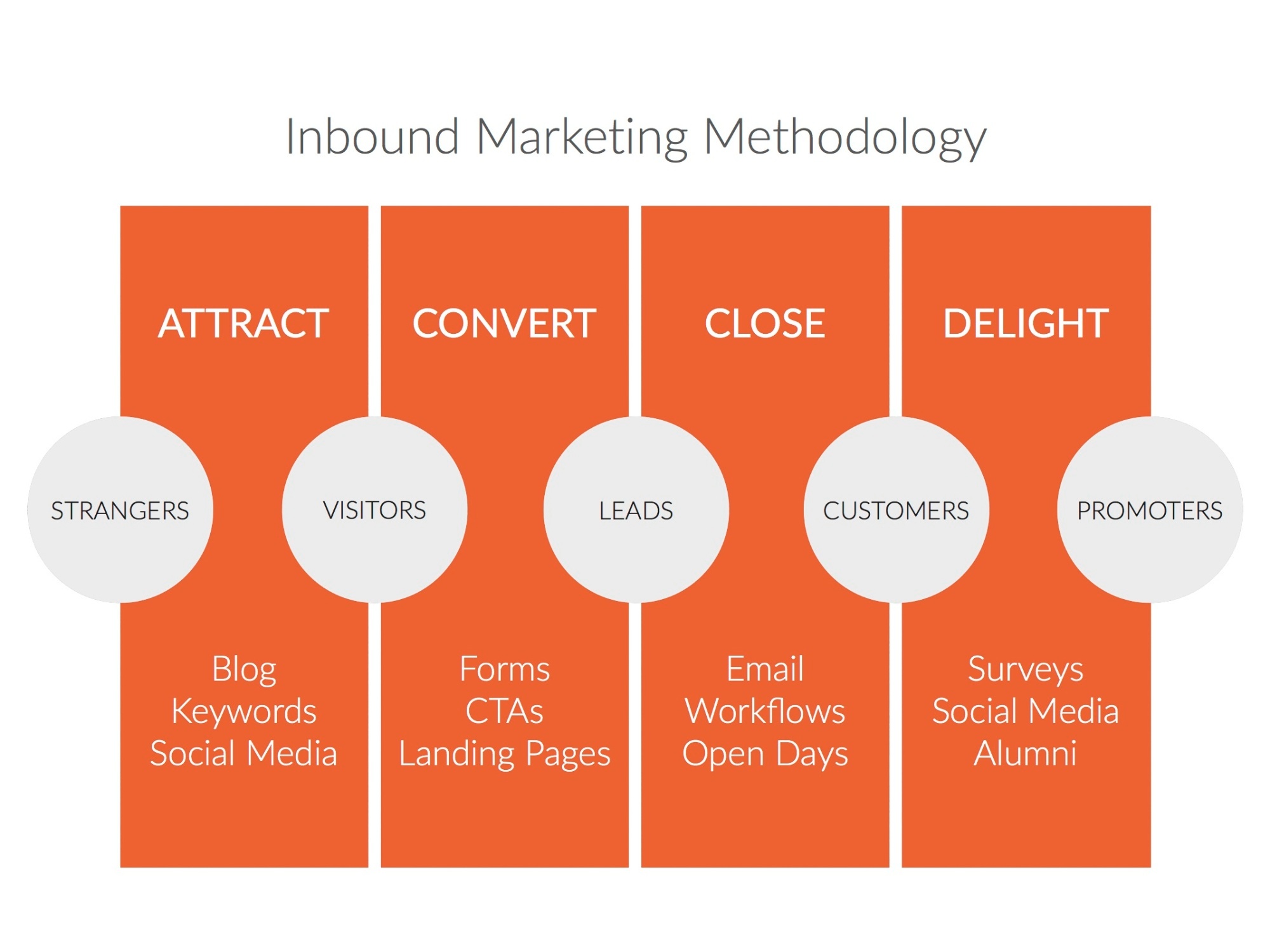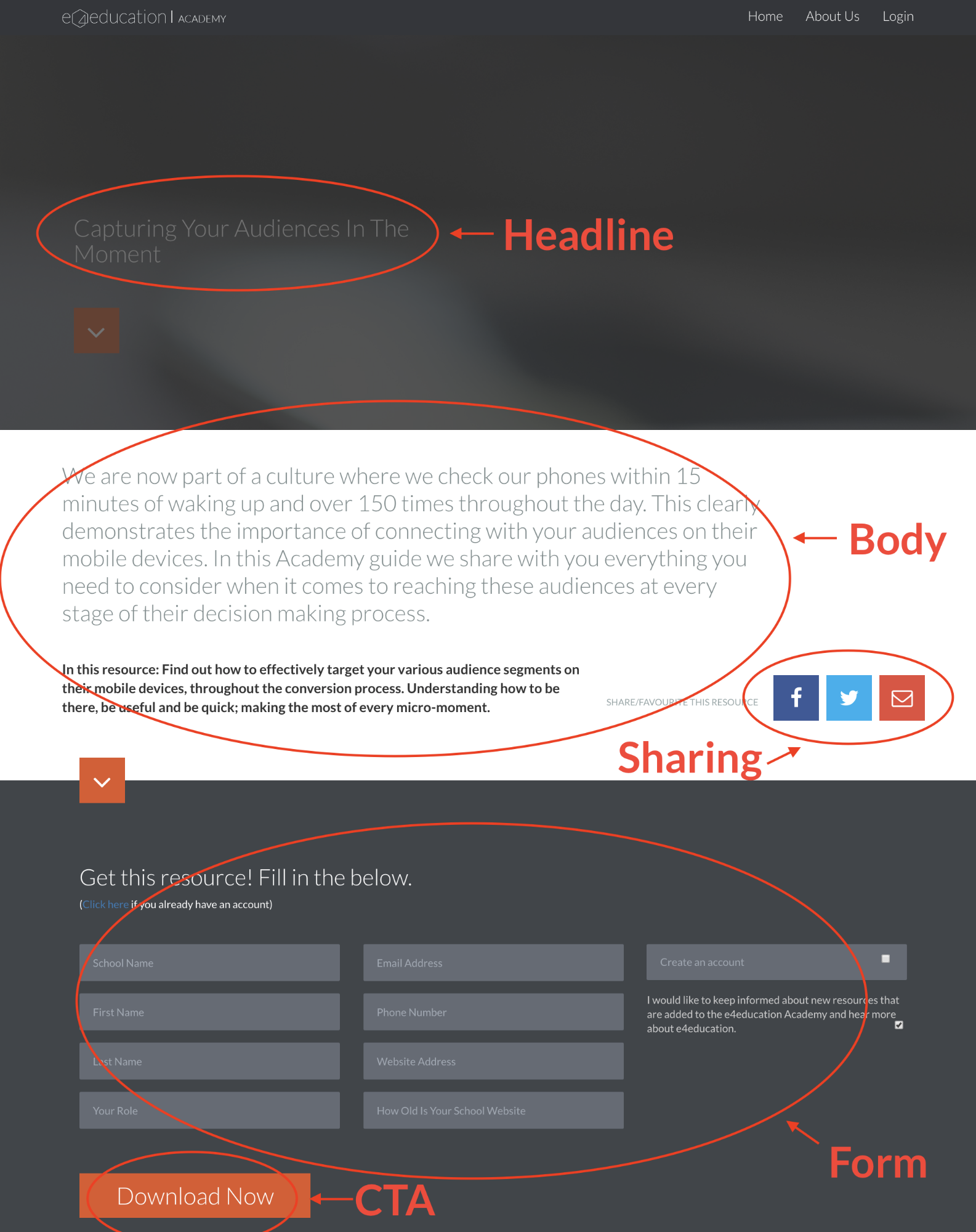When it comes to attracting prospective parents and students to your school, it is up to you to create a fluid, effective and efficient conversion process to help nurture leads into customers. This is done with the inbound marketing conversion process.
Inbound Marketing Conversion Process

The main aim of the inbound marketing process is to convert your website visitors into leads. A lead is a person who has indicated interest in your school in some way, shape, or form. It is your job, as a marketer, to maintain communication with your audience at each every stage of the funnel.
Lead generation: a way of warming up potential customers to your business and getting them on the path to eventually buying. In order to maintain contact with your leads you will need to collect enough information so you can help them through their own decision-making process. This can be done in the 'convert' stage.
The 'convert' stage in the process can be broken down into three distinct parts:
- Calls to action
- Landing pages
- Thank you pages
Step 1: Call To Action (CTA)
The first step to converting your website visitors into leads is to create a call to action.
A call to action is an image, button, or message that calls your website visitors to take some form of action. When it comes to lead generation, this action is to navigate to a landing page.
You need to be empathetic of where your visitors might be in their decision-making process. For example, they're unlikely to enquire about attending your open day before seeing the school's prospectus.
You can create a variety of calls to action to direct your visitors to the information they are searching for. This could be to enquire about an open day, requesting a prospectus, or to fill out a general enquiry form. They should make it clear to the user of what information they will find or what is offered if they click. Using action orientated verbs, like "Download the school prospectus" or "Get in touch today" will help your CTA stand out.
Step 2: Landing Pages
A landing page is a web page a visitor lands on for a distinct purpose. While a landing page can be used for various reasons, one of its most frequent uses is to capture information of your leads through forms.
Your landing pages will have the same look and feel as your main school website, which reinforces your school's brand identity.
They will either have little or nothing in terms of navigation to avoid deterring the attention from the action you want them to perform or the form you want them to fill out.
Here are three distinct elements of a landing page:
- Headline
Make your offer as clear and succinct as possible - short and snappy is often best! - Body
Provide a description and explain the value and benefits of the offer as well as the action the visitor needs to take in order to get it. - Form
Specific information your visitor needs to fill out to collect the information you need.
Don't ask for too much as this could deter visitors from completing it.

Step 3: Thank You Page
Once your visitors have filled in the form on the landing page and performed the desired action you should create a thank you page. This will show your newly generated leads that they have completed the form and deliver the offer.
This also provides an opportunity to direct your new lead back to your website. Link to various other pages on your website so the lead doesn't have to go hunting for it themselves; e.g. a link to your school blog, your Twitter page, or your gallery.
By providing additional direction you will be able to move your newly qualified leads further into the buyer's journey.
Include 'Follow Me' or Social Sharing icons to make it as easy as possible to share your offer with others.

If your school isn't currently using landing pages throughout your marketing efforts, now is the time to bring your inbound marketing strategy up-to-date. Not only are landing pages great for converting visitors into leads and acquiring information and contact details about your audience, it also allows for you to track the successes of any campaign you deliver; whether this is for enrolment, recruitment or general enquiries.
- Top Tips
- Websites
You might also like...
New year, new start
A new year (calendar or academic) is the chance for a fresh start. Goals are set, mistakes are relegated to the past and there’s generally a feeling of ‘newness’ in the air. Whether you’re looking for a new school website design, wanting to improve your school newsletter f...
DfE Compliance: Displaying your curriculum on your school website
Your school website is key source of information for parents, students, staff and the community, but there is certain content that you must always have visible on your website, and which will be checked by Ofsted inspectors prior to a visit. We have a full guide to all of these requirements which...
